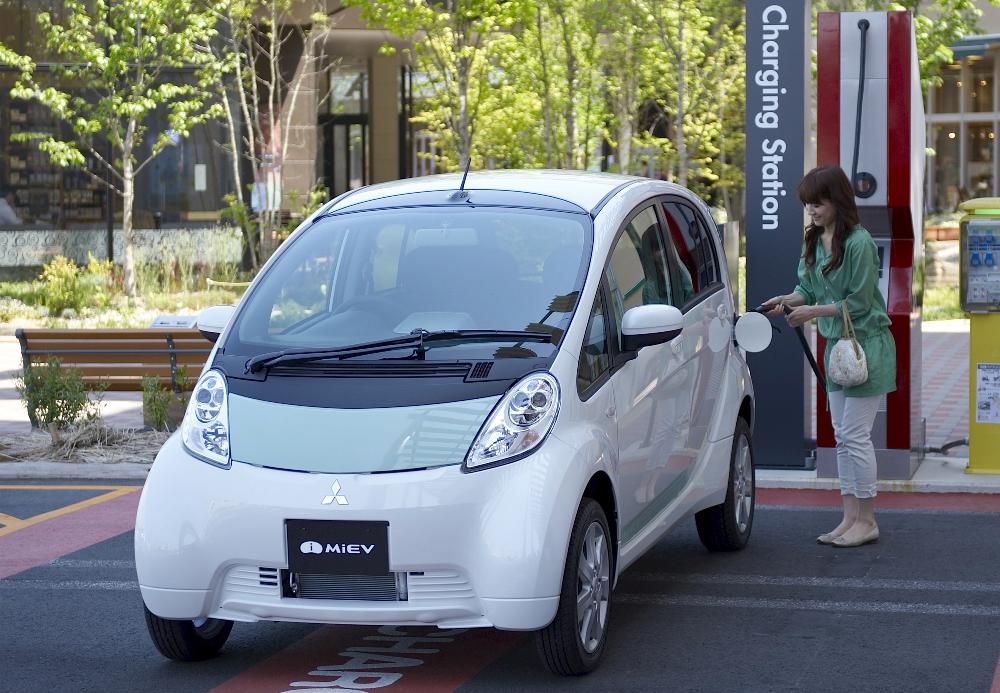Ever since the early 1980s, Japan has led the world of technology and digital entertainment. In 2010, thanks to cars like the 2011 Mitsubishi i and 2011 Nissan LEAF it also adopted electric cars as a viable private transport solution.
But the ultra-fast charging technology which made both cars popular in Japan has been largely missing in the U.S., where it could revolutionise electric vehicle adoption.
Thanks to a pilot project funded to the tune of $230 million by the U.S. government that could all soon change.
Ultra-Fast.

ECOtality Blink DC fast charger plugged in
Level 3 charging is capable of fast-charging the 2011 Nissan LEAF’s 24 kilowatt-hour battery pack from empty to 80% full in around 20 minutes. Instead of using the on-board charger found in all EVs on the market today, Level 3 charging bypasses the car’s charger and provides high-voltage, direct current charging straight to the battery pack.
To transfer the 62.5 kilowatts of power directly to the car’s battery pack, Tokyo Electric Power Company, developed a high-power connector capable of safely sustaining such high power transfer.
On cars like the 2011 Nissan LEAF, this is clearly visible as the larger of the two power receptacles hidden under its charging door.
CHAdeMO?
CHAdeMO is the official name applied to the hardware and software designed by the CHAdeMO Association to provide level 3 fast charging to an electric car. CHAdeMO was jointly founded by The Tokyo Electric Power Company, Nissan, Mitsubishi and Fuji Heavy Industries.
In the context of charging, CHAdeMO normally refers to the level 3 charging equipment and charge ports used to fast charge electric cars.
Why Isn’t It In The U.S. Already?

Mitsubishi i-MiEV electric car at quick charging station
CHAdeMO equipped equipment is in use in the U.S. already, but not officially.
Currently, Nissan USA uses level 3 fast chargers to charge demonstration cars at Nissan LEAF events. There are also a few select level 3 chargers dotted around Washington, Oregon and California. Most of these are part of pilot fast-charging schemes.
But the standard has yet to be officially adopted in the U.S. This is partly due to the ongoing work of the Society of Automotive Engineers (SAE), which has already ratified its own SAE Electric Vehicle Conductive Charge Coupler standard, J1772.
Those with sufficient technical curiosity can find out more from the SAE.
At the moment J1772 is used for level 1 and 2 electric car charging, but the standard does not currently specify a standard for level 3 charging.
Selected Test Area Only
Don’t get too excited though. The $320 million project will pay for 310 chargers to be split between Arizona, California, Texas, Tennessee, Oregon and Washington State. But if you live in these areas and own a CHAdeMO-equipped car like the 2011 Nissan LEAF you can look forward to at least some fast charge stations in the near future.
We hope the CHAdeMO tests are successful. Fast charging is one of the keystones to changing public impressions of the electric car world.













